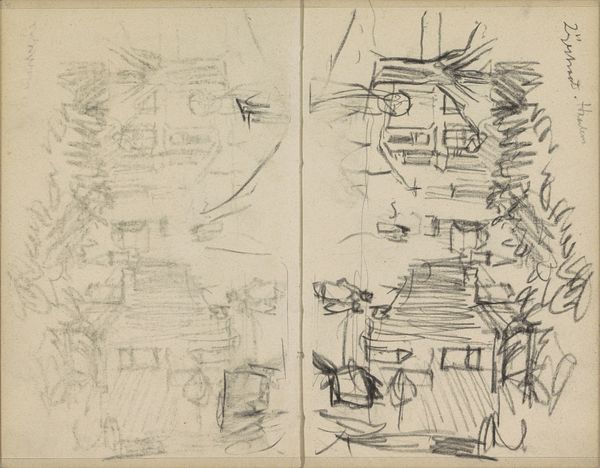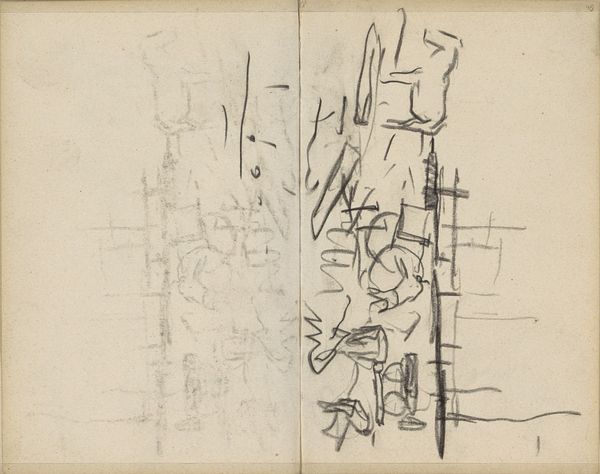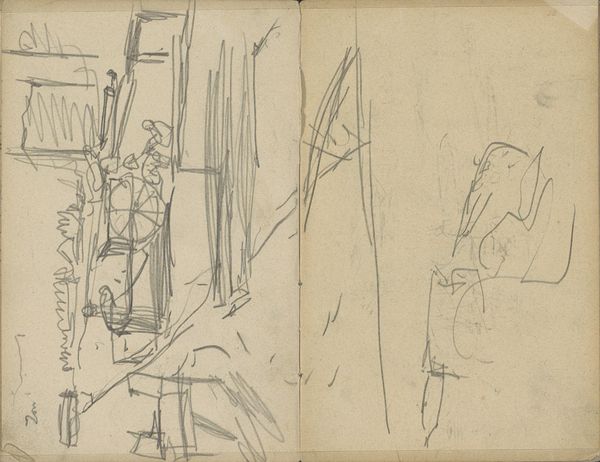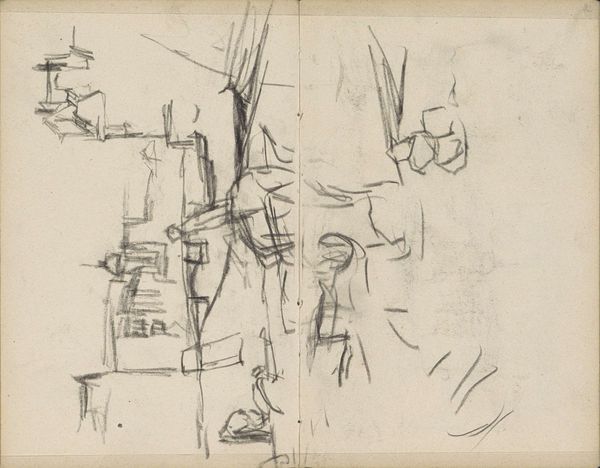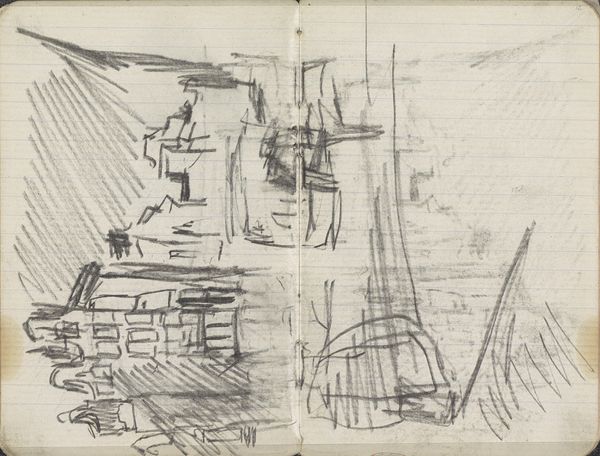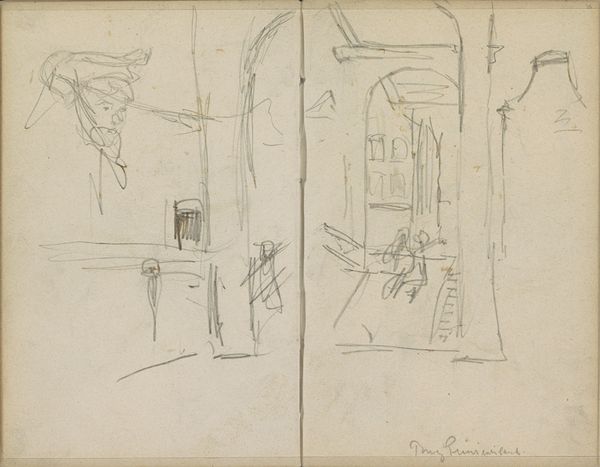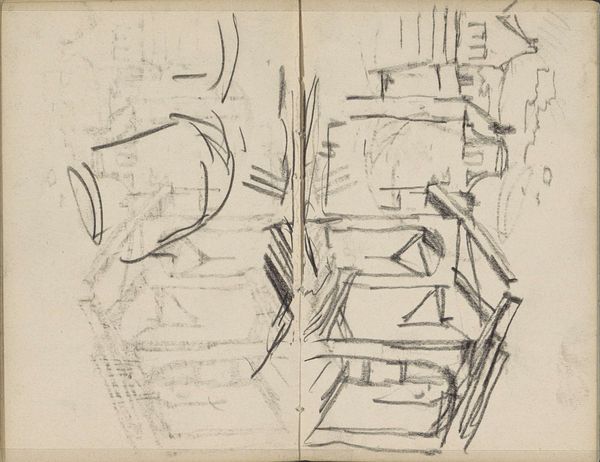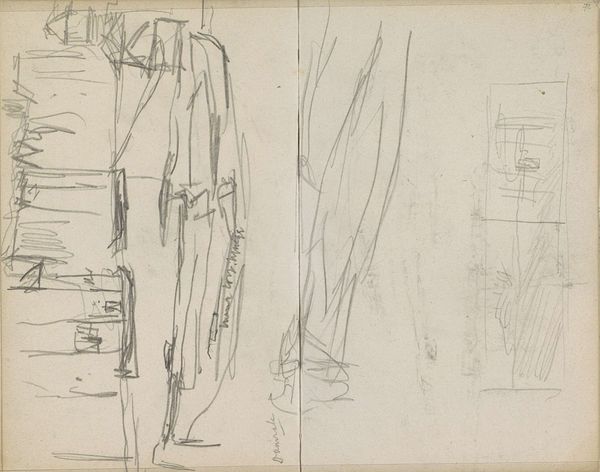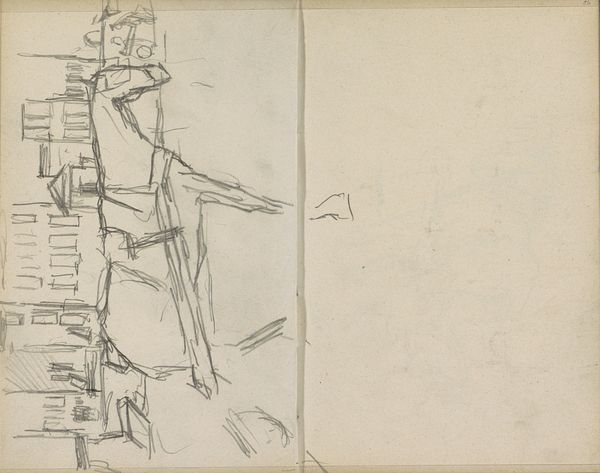
Gezicht op gebouwen, mogelijk in de Van Lennepbuurt te Amsterdam c. 1900 - 1901
0:00
0:00
georgehendrikbreitner
Rijksmuseum
Copyright: Rijks Museum: Open Domain
Editor: Here we have George Hendrik Breitner's "Gezicht op gebouwen, mogelijk in de Van Lennepbuurt te Amsterdam," a pencil drawing from around 1900. The cityscape seems quite fragmented, almost chaotic, and it spans across a double page in a sketchbook. How do you read its visual structure? Curator: Indeed. Note the primacy of line here. Breitner exploits the stark contrast and repetition to construct form and spatial recession. See how the cross-hatching technique generates depth, despite the clear absence of a comprehensive tonal range. It is the rhythm and the density that generate this sense of perspective, and that give a sense of mass to the buildings themselves. How do you interpret this sense of incompleteness? Editor: I suppose it feels raw, almost like seeing the artist's immediate thoughts. It certainly doesn't seem finished, but is that rawness part of its appeal? Curator: Precisely. This "unfinished" quality brings attention to the act of drawing itself. The medium is celebrated, not concealed. Consider the strategic use of empty space which frames and delineates the architectural components and amplifies the drawing’s innate two-dimensionality. This emphasis prompts questions on the artist's selection of subjects and modes of representation. Editor: So you're saying that the *how* is as important as the *what* in a piece like this? The sketch is interesting not for what it portrays, but for how it represents those objects with such basic lines and simple forms. Curator: Exactly. The drawing highlights the materiality and artistic strategies. This methodology provokes discourse regarding the nature of artistic interpretation and representational practices, underscoring the importance of aesthetic qualities in defining art experiences. Editor: That makes perfect sense. I hadn't considered how much the unfinished aspect contributed to the artwork's power. Thanks for pointing out these critical features. Curator: My pleasure. It's by analysing these artistic tactics, that we decipher not only the object's form, but its underlying aesthetic and functional significance.
Comments
No comments
Be the first to comment and join the conversation on the ultimate creative platform.


